

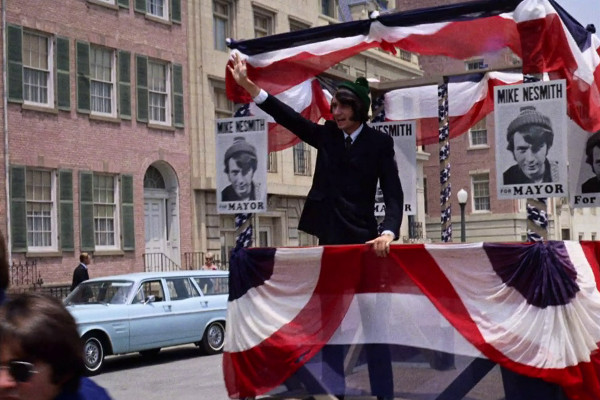
Technically a political story as Mike runs for mayor, but it's a very fluffy, "trad" episode with no real satirical ambition... there are maybe only half a dozen season two episodes that are genuinely subversive, and the movie Head is where this reaches its highpoint. In critiquing the TV shows in this manner, it must be noted that it often achieves exactly what it sets out to do: exist as a TV series there to entertain the very young, and succeeds on those terms perfectly.
One thing that is hard to ascertain, particularly for those who, like myself, caught the series on 70s and 80s repeats, is how groundbreaking the series actually was at the time. It's often cited that the producers wanted the series to reflect avant garde techniques, but these same techniques became so quickly absorbed into the television lexicon as we know it that The Monkees no longer looks as striking as it would have upon original transmission. Like another series covered earlier on this site, The Sweeney, it effectly changed the way series of its genre were presented, but was so influential in doing so that what was unique when it aired now appears to be very much the norm.
Songs: "No Time", "Pleasant Valley Sunday"
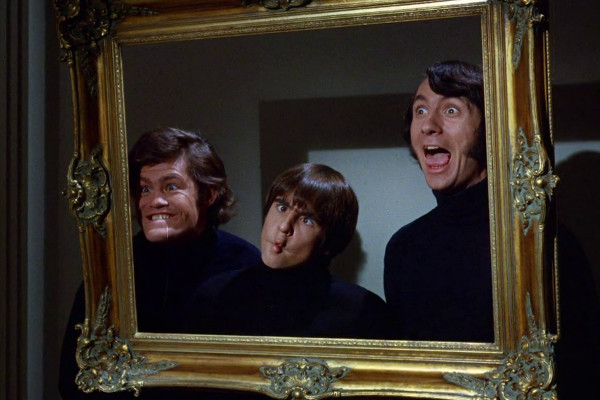
This is probably the point in the rankings where we go from below par episodes to average ones. However, there's perhaps no greater illustration of the disconnect between the music of the Monkees and the target audience of their series than here. Sure, "Daydream Believer" is lightweight (albeit very likeable) and even Davy Jones wasn't keen on singing it. But with Micky's "Randy Scouse Git" we get what sounds like the Apocalypse and all the horrors of war... while in the episode Micky robs an art museum under the name "The Leopard", which causes him to miaow 14 times for no real apparent reason. The people involved made no secret of the fact that the demographic of the TV series was young teen girls, and so while Micky sings "Why don't you hate who I hate, kill who I kill to be free", we get Pete running around the basement of the museum in a day glo chase sequence.
Perhaps the biggest point of trivia about the second season is that Mike Nesmith had to have a tonsillectomy in late May, and the episodes he filmed post-operation feature a different voice. Although Art For Art's Sake was one of the seven season two episodes filmed pre-op, and consequently features a huskier Mike, his overdubbed narration for the "Mission: Ridiculous" sequence was recorded much later, and is noticeably a higher pitch.
Songs: "Randy Scouse Git", "Daydream Believer"
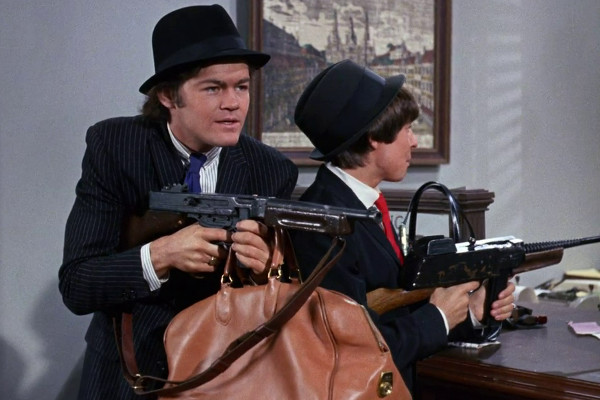
The Picture Frame is just as throwaway as those before it, but there's a greater care in its making, and slightly more attention given to the jokes. This one also has a reasonably clever title, as the Monkees are duped into robbing a bank, believing they're making a picture. It's all passable fluff, boosted by the inclusion of two top tier Monkees tracks: a romp set to "Pleasant Valley Sunday", then a tag on with a very different take on "Randy Scouse Git" (AKA "Alternate Title"), where Micky messes around and cracks up on screen.
Speaking of the music, then the remaining Monkees decided to celebrate their 50th anniversary with a brand-new album, including an archive recording by Davy. Good Times! can be ordered online from Amazon and is easily the best of their four "comeback" albums. All of the original Monkees albums are much liked here at The Anorak Zone (yes, even "Changes"), but the post-1970 works are a different proposition entirely. The 10th anniversary of the series saw Micky and Davy reunite (along with Tommy Boyce and Bobby Hart), but were turned down by Pete and Mike and were legally unable to use the name "The Monkees" to make it official. Titled "Dolenz, Jones, Boyce & Hart", the somewhat dreary and cheesy product features a 30-year-old Micky Dolenz singing "Teenager In Love", as well as other even less notable compositions.
The 20th anniversary saw the release of "Pool It!" with all the members except Mike, and, while far from great, has the odd scant moment. "Justus", the 30th anniversary album, and the only one to truly feature all four Monkees with no other musicians is, sadly, the worst album they ever did, backed up by the faintly depressing 1997 special Hey, Hey, It's the Monkees.
It's at this point that we reach Good Times!, and, while this is obviously one person's subjective opinion of the releases, following on from the run of three significantly below-par albums, then even a mediocre release would be a far better coda to their career than the nadir of "Justus". Thankfully, the new release is far, far better than could be expected, possibly comparable with the releases from their peak period.
The thirteen track album contains seven songs that were written many years earlier, including the unreleased* "Love To Love" with Davy's archive vocals. Six tracks (or seven if the bonus track is counted) are crafted by more modern writers, including those behind the groups XTC, Weezer, The Jam and Oasis. Arguably the only Monkees album to contain not a single weak track - the Head soundtrack containing sometimes-missable movie clips and surely even the biggest "Pisces, Aquarius, Capricorn & Jones Ltd." fan hits skip when they get to "Peter Percival Patterson..." - then this really is a worthwhile purchase.
The attempt to not update the sound to modern values (a folly of all the previous comebacks) and instead treat it as if it's a freshly-discovered 60s album is what really pays off. Certainly, there are anachronisms with this approach... sometimes small things like the word "hipster" appearing in this environ, or the Monkees not sounding quite like they did (though considering they're all in their 70s, they sound a Hell of a lot better than you'd expect), but larger things like the concerns of the period no longer having cultural relevance. Although the Monkees are known as a "fun" band, they often had a darker underside to their material, most notably with songs such as "Daily Nightly", "Mommy and Daddy" and "Sunny Girlfriend". Even upbeat tracks like "Pleasant Valley Sunday" were built on a foundation of sardonism, in some way making the album feel like an artificial nostalgia for a time that never really quite - and now no longer can - exist.
All of which would be more detrimental were it not for the fact that these are such great tunes. That they're capable of making one of the best albums of their career this late is a wonderful thing, and this particular release is going to get many plays around Anorak Towers over the coming months. It remains to be seen if this new album will attract a younger generation to the group, but at this rate they might finally get to take their place in the Rock 'n' Roll Hall Of Fame...
* Technically this was released as part of the unreleased tracks "Missing Links" series, though not as a "proper" Monkees album, and this version contains new harmonies and instrumentations.
Songs: "Pleasant Valley Sunday", "Randy Scouse Git"
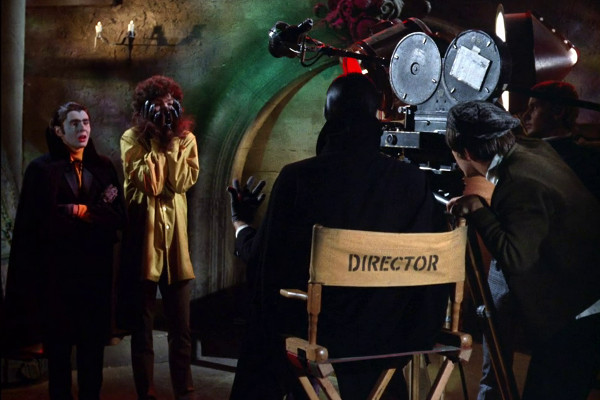
An episode that frequently steps outside the box and acknowledges that it's a TV show, yet without a strong framework to do it in. We're plunged straight in to Davy on a date with Dracula's daughter, and, as the "trad" storyline isn't rigidly developed, it makes poking holes in it seem something of a mess. This is an episode without even a real ending, the conclusion read out as exposition by Mike.
Perhaps the most memorable scene is where Davy and Micky imagine themselves as monsters and Dracula interrupts them. Davy explains that they're the Monkees, having a dream sequence romp and no one interrupts them... only for Dracula to step behind the cameras and lights and sit in the director's chair, explaining that he's now in charge of reality.
Song: "Goin' Down"
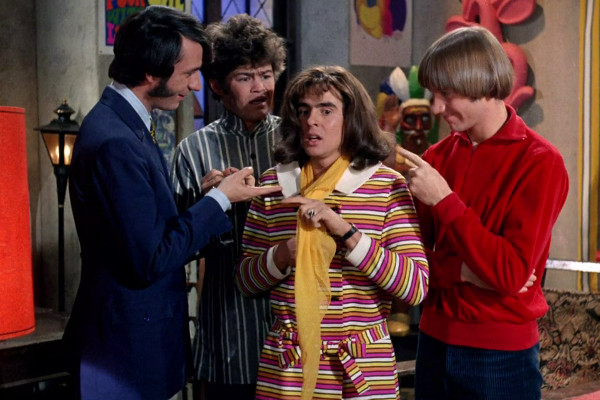
Reputedly one of the most improvised episodes, with huge chunks of dialogue, including that of the contest host, made up on the spot. Said contest is a band competition, which requires one member of the group to be female. This leads to Davy in a dress, with 90% of the jokes based around men wanting to kiss him. It's a pleasant enough viewing experience as, while the story is very unambitious, there is obvious evidence of good chemistry between the leads, clearly laughing together during takes.
Five minutes before the end, the story – such as it is – stops and Davy chats with musician Charlie Smalls about soul, working on a pleasant-sounding track called "Girl Named Love". Smalls, just 24 at the time, went on to write the musical The Wiz, and was the arranger of the Monkees track "The Girl I Left Behind Me". Sadly, their collaboration here was never made as a recording. All three musician cameos are interlinked, and were shot around the same time, approximately 18-22 December: the car that Frank Zappa destroys in The Monkees Blow Their Minds is later played on by Tim Buckley in The Frodis Caper. Lastly, Davy's earnest discussion with Smalls of what soul entails appears to be satirised by Mike and Frank Zappa, who speak virtual nonsense around the same topic.
Songs: "Last Train to Clarksville", "The Door Into Summer", "She Hangs Out"
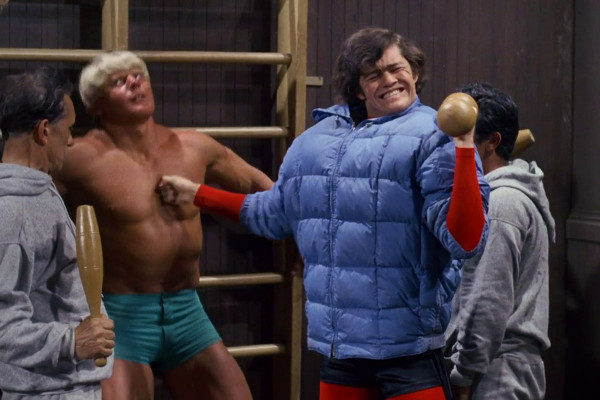
Mike Nesmith doesn't appear in this instalment, with an in-episode explanation of sorts; a running joke of "I wish Mike was here" when things go wrong. His absence is somewhat tempered by the fact that both featured songs are his, and, in fact, he can be seen singing the second, and brief stock clips of him are used in the romp sequence. The reasons behind this aren't entirely clear; it's been suggested that it was due to a tonsillectomy, however, the dates don't quite add up. Another suggestion is that he refused to take part due to "artistic differences", which may be true, as this is particularly childish episode, and in direct contrast to his drug-referencing song choices. There's even a nod to Proust in the closing minutes, which is a very different tone to the child-friendly high jinks elsewhere.
The actual storyline is based around Micky being bullied on the beach and training at a gym to get tough and stand up to his oppressor. The strangest moment comes when Davy and Peter try and talk him out of it, explaining that violence is never the answer. The reason this is such an odd viewing experience is that Davy and Peter were the most physically volatile behind the scenes, with Davy stating in an interview with the Smithsonian channel: "There was always punch ups going on. The only punch up that never happened was between me and Mike Nesmith. [...] Micky and I had a little tussle once in a while, and Peter and I certainly did, on the set."
Songs: "Sunny Girlfriend", "Love is Only Sleeping" (alternate mix)
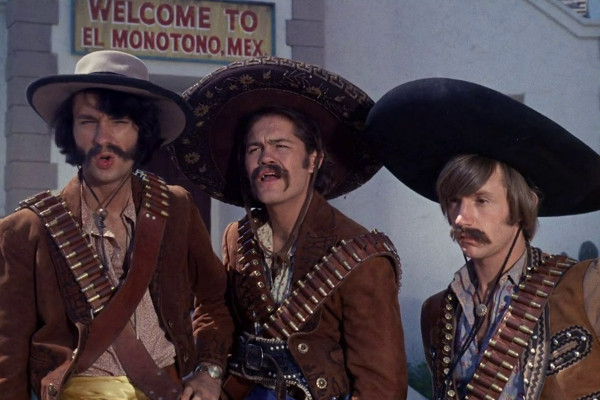
A barrowful of racial stereotypes abound, as the Monkees are kidnapped by Mexicans, and three of them spend the episode in sombreros doing the accent. They take this further, by meeting a black Mexican who they argue can't be a real Mexican, while he suggests that if they're really tourists they need Japanese cameras. It's a minefield of offence waiting to happen, should you wish it, and adding to the fun is the constant postmodern referencing, with Micky acknowledging that they're all just characters in a TV show. Ironically enough, Micky was once given the role of a Mexican when was six-years-old in the film "The Rings Around Saturn". Perhaps fortunately a political revolt in Mexico meant that the film was never made.
It's A Nice Place To Visit was scheduled as the first episode of the second season, launching the run from 11th September 1967-25th March 1968. There's perhaps not much use dwelling on the coincidental trivia that one of guest star Cynthia Hull's first roles was in the 1966 movie "For Pete's Sake", but it's striking that it's the first episode to feature the track as a end titles replacement for The Monkees Theme. Note that here (and in The Devil And Peter Tork) it appears in a slightly different mix.
Song: "What Am I Doing Hangin' 'Round"